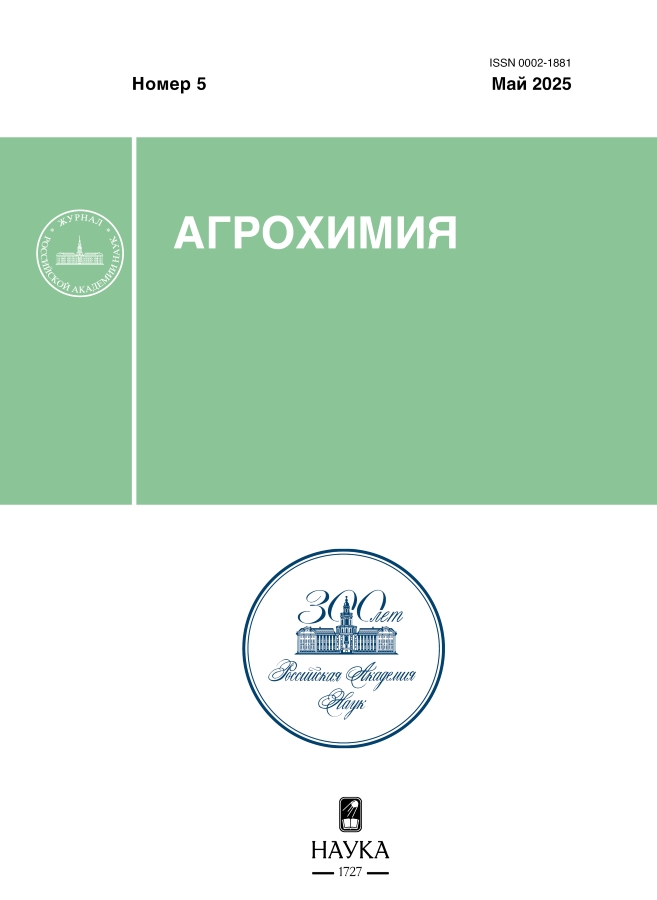Effect of biologization techniques and basic tillage on crop yields sugar beet root crops
- Autores: Dedov А.V.1, Nesmeyanova M.A.1, Kryukov G.M.1
-
Afiliações:
- The Voronezh State Agrarian University named after Emperor Peter I
- Edição: Nº 5 (2025)
- Páginas: 74-79
- Seção: Agroecology
- URL: https://ruspoj.com/0002-1881/article/view/685260
- DOI: https://doi.org/10.31857/S0002188125050093
- EDN: https://elibrary.ru/TUIUEU
- ID: 685260
Citar
Texto integral
Resumo
In a study conducted in 2012–2023, the influence of biologization techniques and basic tillage on the fertility of leached chernozem and the yield of sugar beet root crops in a fallow crop rotation was studied. The potential fertility of leached chernozem ensured the yield of sugar beet root crops against the background of plowing 391 kg/ha, free-fall loosening by 25–27 cm – 392 kg/ha, surface treatment by 12–14 cm – 354 kg/ha. Replacing the employed steam with the sideral one in the specialized beet crop rotation provided an increase in the yield of sugar beet root crops on average against the background of plowing by 28 c/ha, free–fall loosening by 25–27 cm – by 12 c/ha, surface treatment by 12–14 cm – by 21 c/ha. Biologization techniques against the background of applying various doses of mineral fertilizers against the background of dump plowing increased the yield of sugar beet root crops by 10–33% by 25–27 cm, free loosening by 25–27 cm – by 8–19%, surface treatment by 12–14 cm – by 6–22%.
Palavras-chave
Texto integral
Sobre autores
А. Dedov
The Voronezh State Agrarian University named after Emperor Peter I
Autor responsável pela correspondência
Email: dedov050@mail.ru
Rússia, Michurina str. 1, Voronezh 394087
M. Nesmeyanova
The Voronezh State Agrarian University named after Emperor Peter I
Email: dedov050@mail.ru
Rússia, Michurina str. 1, Voronezh 394087
G. Kryukov
The Voronezh State Agrarian University named after Emperor Peter I
Email: dedov050@mail.ru
Rússia, Michurina str. 1, Voronezh 394087
Bibliografia
- Доспехов Б.А. Методика полевого опыта (с основами статистической обработки результатов исследований): учеб. пособ. 5-е изд., доп. и перераб. М.: Агропромиздат, 1985. 351 с.
- Цыгуткин А.С. О возможности трансформации повторения во времени в дополнительный фактор схемы опыта // Агрохимия. 2002. № 2. С. 77–85.
- Цыгуткин А.С. Методология статистической обработки многолетних данных опыта М.: Россельхозакадемия, 2002. 27 с.
- Шпаар Д., Дрегер Д., Захаренко А. Сахарная свекла / Под ред. Д. Шпаара. Минск: ФУАинформ, 2000. 258 с.
- Агрометеорологические бюллетени по Воронежской области за 2011–2020 годы // Воронежский центр по гидрометеорологии и мониторингу окружающей среды, филиал Центрально-Черноземного управления по гидрометеорологии и мониторингу окружающей среды. URL: https://www.meteorf.gov.ru/activity/gidrometeo/ (дата обращения: 08.12.2023).
- Минакова О.А. Оценка динамики урожайности культур и продуктивности зерносвекловичного севооборота при краткосрочном и длительном использовании удобрений в ЦЧР // Сахар. свекла. 2023. № 6. С. 19–22. doi: 10.25802/SB.2023.57.21.005.
- Шашко Д.И. Агроклиматическое районирование СССР. Л.: Гидрометиоиздат, 1978. 191 с.
- Семыкин В.А., Картамышев Н.И., Дедов А.В Биологизация земледелия в основных земледельческих регионах России. М.: КолосС, 2012. 471 с.
- Смольский Е.В., Сеченков А.А., Нечаев М.М. Значение почвенно-климатических условий и удобрений в формировании урожая сахарной свеклы // Сахар. свекла, 2023. № 7. С. 19–22.
Arquivos suplementares










